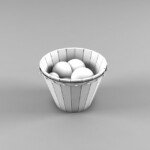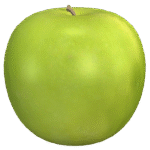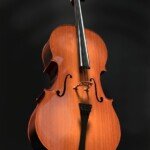Unleash creativity and precision: Deeply delve into CNC projects from wood to metal
Computer numerical control (CNC) machining has completely changed how we bring our minds to life. From sophisticated wooden sculptures to mission-critical aerospace components, CNC technology bridges the gap between digital design and tangible reality with unparalleled accuracy and repeatability. Whether you are a passionate enthusiast, small business owner or engineer who designates parts for industrial applications, understanding the huge potential of CNC projects opens up a creative and functional possibilities.
CNC Canvas: Material versatility
One of the basic advantages of CNC machining is its incredible material compatibility. Project span:
-
Woodworking Miracle:
- Signage and decoration: Elaborately carved 3D logos, personalized patches, decorative wall panels and artistic engravings, handmade impossible details.
- furniture: Precision slice joinery (dovetail, scimitar and tenon), specialized components for tables, chairs and cabinets, as well as unique curved elements.
- Musical instrument: Guitars, violins, drums with precise routing cavity, fingerboards and nightstands require exact sizes.
- Prototypes and models: Create highly accurate scale models for architecture, product design or artistic expression.
-
Metal Mastery:
- Cars and Motorsports: Engine assembly (block, head, manifold), transmission parts, suspension assembly and custom brackets – demanding strength, heat resistance and tight tolerances.
- Aerospace and Defense: Complex turbine blades, structural fuselage parts, landing gear parts, satellite hardware – Extreme accuracy, lightness and material integrity are crucial.
- Industrial Machinery: Gears, shafts, housings, fixtures, fixtures and custom tools – a backbone of manufacturing reliability and efficiency.
- Medical equipment: Surgical instruments, implants (requires biocompatible materials (such as titanium), diagnostic equipment parts – require perfect finish and shimmer accuracy.
- Consumer Electronics: Precise housings, radiators, connectors and chassis for smartphones, laptops and other devices.
- Beyond Wood and Metal: CNC machines are good at handling large amounts of other materials and expanding their project horizons:
- plastic: Acrylic display, custom gears (nylon, delin), prototype, housing, cutting board (HDPE).
- Composite materials: Processed carbon fiber reinforced polymer (CFRP) or glass fiber for lightweight, high-strength applications.
- Foam: Create molds, patterns, packaging inserts and sculptural elements.
- wax: Mainly used in investment casting model.
Improve complexity: Power of five-axis CNC
3-axis CNC machining (moving along X, Y, and Z) effectively handles many projects, but complex geometry often reaches the limit. This is Five-axis CNC machining Become revolutionary. Imagine that cutting tools not only move linearly, but also tilt and rotate on both axes At the same time.
Why five-axis is important, especially for metals:
- Single setting processing: Complex parts that require machining in multiple aspects can often be done in a single setup on a five-axis machine. This eliminates repositioning errors and greatly reduces overall production time. This is crucial for high-precision metal parts commonly found in the aerospace and medical fields.
- Complex geometric shapes make it possible: The engraved surfaces, deep cavity, undercuts, turbine blades, impellers and organic shapes are organic shapes that are impossible (or extremely inefficient) on 3-axis machines and can be achieved with precise and smooth surface finishes.
- Excellent tool access and shorter tools: The tilting spindle allows the tool to approach the workpiece at the optimal angle, allowing for better access to tricky features. Shorter, more rigid cutting tools can be used to minimize vibration, improve surface finishes (especially bare metal), and allow for higher cutting speeds.
- Reduce delivery time and cost efficiency: Combining multiple operations into one setup can significantly speed up production and reduce labor costs. For projects that require a larger quantity or tightening schedule, five-axis are often cost-effective despite higher investment in machines.
Bridging Vision to Reality: Advanced CNC Processing Services
From concept to perfect finished parts requires not only machinery, but more. It requires expertise, experience and comprehensive support. That’s where dedicated manufacturers like Greglight CNC machining Excel.
Huge utilization The most advanced five-axis CNC equipment Plus the depth Production technology expertise Meet the most demanding challenges, especially in metal parts manufacturing. Their focus areas are completely aligned with the needs of complex projects:
- Professional solutions for metals: Specializes in solving complex metal parts manufacturing problems – from complex aluminum housings to hardened steel industrial components and titanium medical implants.
- Material mastery: Expertise in processing a range of metals: aluminum alloys (e.g., 6061, 7075), stainless steel (e.g., 303, 304, 316, 17-4ph), brass, copper, titanium, tool steel, etc.
- One-stop post-processing: Understanding that this work is not done after processing, Greatlight provides a comprehensive finishing service including:
- Anodizing (Type II color, Class III hard jacket)
- Polish, bead blasting, brushing teeth
- plating (Nickel, chromium, zinc)
- Heat treatment (Annealing, tempering, hardening)
- Painting and powder coatings
- Customization and speed: Highly adapted to custom part requirements, providing prototyping and extended production at fast turnaround times – critical to iterative design or meeting market demands.
- Precise focus: As an expert in five-axis machining, Greatlight provides excellent dimensional accuracy and surface quality, especially critical for critical aerospace, medical and high-performance applications for each micron count.
- Competitive value: Simplified processes and advanced technology allow Greatlight to provide customized precision machining at highly competitive prices.
Whether you have complex prototypes or require mass production of precision metal parts, working with expert five-axis CNC manufacturers such as Greatlight ensures quality, efficiency and direct access to the right technology.
Conclusion: From imagination to tangible innovation
CNC machining is more than just simple cutting and engraving. It is a transformative technology that empowers materials and industries to create and solve problems across issues. Thanks to innovations such as five-axis machining, woodworking projects have gained artistic and repeatability, while metal manufacturing can reach new heights of complexity and reliability. The key to unlocking the full potential of a project (whether it’s amazing artwork or a critical engine component) is in choosing the right technology and the right partners. For projects that require the highest accuracy, complex geometry and top metal work, advanced five-axis CNC machining is a good path from ambitious design to flawless functional reality with professional experts like Greatlight CNC machining.
Frequently Asked Questions about CNC Projects (FAQs)
Question 1: Which software do I need to design for CNC machining?
A: CAD (Computer Aided Design) software is crucial to creating 3D models. Popular options include Fusion 360, Solidworks, AutoCAD, and Rhino. Then use CAM (Computer Aided Manufacturing) software to convert the CAD model into a tool path. The CAM software (usually integrated with CAD in programs like Fusion 360) creates a G-code instruction that tells the CNC computer how to move.
Q2: What file formats are required for CNC processing?
A: The general general format for exchanging 3D geometry includes steps (.stp, .step) and iges (.igs, .iges). For 2D profiles (such as routing wooden signs), DXF or DWG is standard. Although native CAD files can sometimes be used, robustness is usually preferred.
Q3: Is there any limit on the size of the CNC project?
A: Yes, size is limited by the machine’s working envelope (its X, Y, and Z travel). Desktops may only handle small parts (<2 feet), while machines in industrial workshops can handle long, tall parts. If the parts are too large, you may need to be processed in the section and assembled later.
Q4: What design considerations are crucial for CNC machining? (DFM)
A: Manufacturing design (DFM) is crucial. This includes:
- Wall thickness: Ensure sufficient thickness for rigidity and machining.
- Internal corner: Due to the circular cutting tool, the machining requires a circular inner corner (rounded corner).
- Feature Accessibility: Can the tool physically reach the surface that needs to be processed?
- Undercut: Specialized tools or 5-axis functions may be required.
- tolerance: Specify realistic tolerances only where critical cost savings are.
- Material selection: Select materials suitable for the application and processing process. Consult your manufacturer as soon as possible!
Q5: When is 5-axis CNC machining required?
A: Consider 5 axis (such as Greatlight’s service):
- Your part is very complex and requires the function of machining from multiple angles.
- You need to process the undercut or deep cavity.
- It is crucial to achieve very high-quality surface finishes on complex curves.
- By reducing multiple 3-axis operations/settings to one, parts can be merged.
- Production volume demonstrates potential set-up/cycle-time advantages.
- It is crucial to use machine materials that are very expensive or difficult to reduce waste.
Question 6: How is the cost of CNC machining compared to other manufacturing methods such as 3D printing or casting?
A: **It depends to a lot on volume, complexity and material.
- Low capacity/complex prototype: CNC can be compared to functional metal parts; 3D printing (SLA/FDM) may be cheaper for simpler plastic shapes.
- Large/simple parts: For a large number of simple shapes, casting (mold, investment) or stamping may be more cost-effective than CNC.
- High precision/complex metal parts: Regardless of the amount of aerospace/medical, CNC (especially 5-axis) is usually the best or only option. Typically, CNC provides an optimal balance of strength, accuracy, material properties and speed for single-use to medium batches, especially in metals.
Question 7: Can Greatlight CNC help with the design phase?
A: Yes. Experienced manufacturers like Greatlight usually offer Manufacturability (DFM) feedback design. Send them your concept or prototype model, and their engineering team can suggest optimizing the design of CNC machining – suggesting improved manufacturability, reduced cost, strength and precision, leveraging its specific expertise in metal parts production. Early collaboration saves time and money.
Ready to turn your CNC project vision into reality? Work with experts with equipment accuracy, complexity and speed.

















